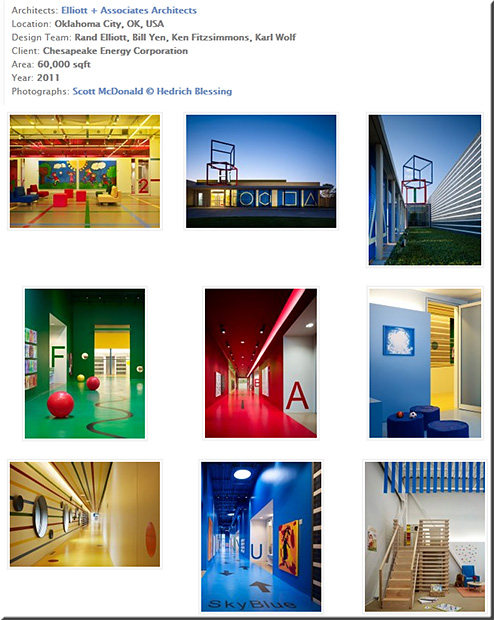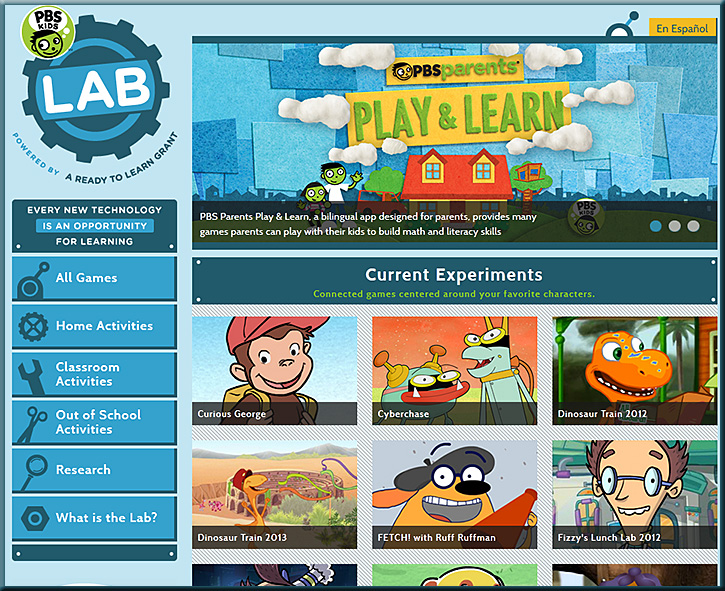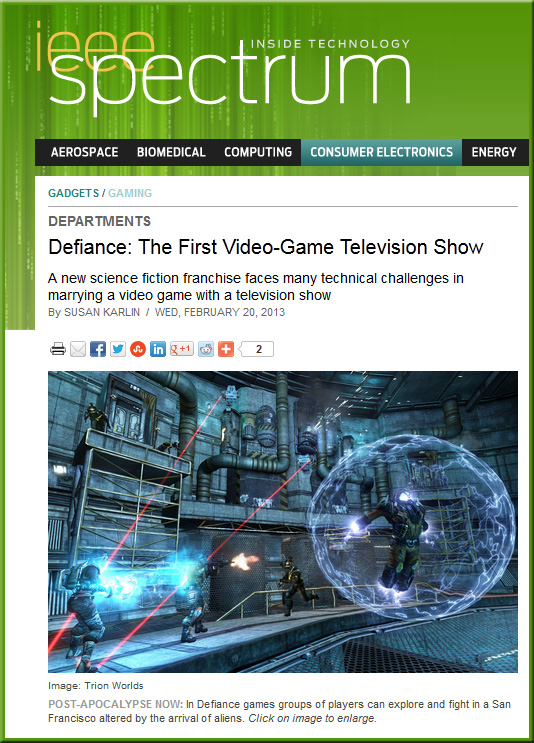Researchers create cloud-based brain for robots — from gigaom.com by Derrick Harris
Summary:
A group of European researchers has created a cloud platform designed to serve as a central processing and data-access brains for robots located throughout the world.
Readers of this blog know that one of the areas that I am pulse checking is robotics and trying to ascertain the impact that robotics is having (and has had) on employment. Such research prompts me to ask:
- Do these trends affect what we should be teaching our youth?
- Do these trends affect how we should be preparing our youth?
- Wanted: More jobs for Watson
Summary:
IBM’s always on the look out for new challenges for Watson to tackle. Two dozen teams of USC students recently had 48 hours to create their own business plans for the technology.!
- I do NOT mean to “lift up” technology here — such technologies are merely tools; though sometimes folks in this space (esp. from America) tend to overestimate how far they’ve come and underestimate what God has created/designed.
Student Blogging Resources — from Pernille Ripp, 5th grade teacher
Also, Pernille blogs elsewhere as well:
- On Tumblr – Just for some some extra info
- Global Read Aloud – one book to share the world
- My 5th grade classroom website – because these kids are amazing
- My 5th graders Kidblog site – again didn’t I tell you these kids are amazing
- Lessons from the Fourth Dimension – Sometimes I have a really cool idea so this is where I share it
- The Style Teacher – My other passion is fashion
- West Middleton Elementary – Where I teach
31 top apps for education from FETC 2013 — from The Journal by Stephen Noonoo
Excerpt:
Like last year, this year’s popular App Shootout at FETC 2013 tossed around dozens of useful apps for teachers and students. Once again the closeout session was led by ed tech pros Gail Lovely, Hall Davidson, and Jenna Linskens, who each presented apps in three different categories of their choosing, including their favorite “wow” apps. Read on for a selection of the most buzzed about apps for Apple devices. For even more app ideas, visit the shootout’s Web site and complete app list Google Doc.
Part 1: The shift from push to pull learning — from clomedia.com by Jeffrey Cattel
Learning organizations are moving from pushing learning to employees to helping workers find answers by leveraging mobile, video on-demand and other forms of just-in-time learning.
From DSC:
Something I think should happen in K-12 and higher education as well as in the corporate world — shifting from pushing to pulling and helping each individual own/develop their own learning ecosystem.
Excerpt from Why schools must move beyond one-to-one computing — from novemberlearning.com by Alan November (emphasis DSC)
Let’s drop the phrase “one-to-one” and refer instead to “one-to- world.”
This simple, one-word change takes us beyond the focus on the boxes and wires and alludes to why we are making the investment in the first place. The planning considerations now evolve from questions about technical capacity to a vision of limitless opportunities for learning. This change also has enormous implications for the design of staff development. As soon as you shift from “one- to-one” to “one-to-world,” it changes the focus of staff development from technical training to understanding how to design assignments that are more empowering—and engage students in a learning community with 24-hour support.
From DSC:
Some very frustrated reflections after reading:
- It’s time to worry: Boys are rapidly falling behind girls in school — from takepart.com by Peg Tyre
Reporter Peg Tyre explains why the challenges boys face in school need to be taken much more seriously.
Excerpt:
Right now, boys are falling out of the kindergarten through 12th grade educational pipeline in ways that we can hardly imagine.
This situation continues to remind me of the oil spill in the Gulf (2010), where valuable resources spilled into the water untapped — later causing some serious issues:
.
From DSC:
What are we doing?!!! We’ve watched the dropout rates grow — it doesn’t seem we’ve changed our strategies nearly enough! But the point that gets lost in this is that we will all pay for these broken strategies — and for generations to come! It’s time to seriously move towards identifying and implementing some new goals.
What should the new goals look like? Here’s my take on at least a portion of a new vision for K-12 — and collegiate — education:
- Help students identify their God-given gifts and then help them build up their own learning ecosystems to support the development of those gifts. Hook them up with resources that will develop students’ abilities and passions.
. - Part of their learning ecosystems could be to help them enter into — and build up — communities of practice around subjects that they enjoy learning about. Those communities could be local, national, or international. (Also consider the creation of personalized learning agents, as these become more prevalent/powerful.)
. - Do everything we can to make learning enjoyable and foster a love of learning — as we need lifelong learners these days.
(It doesn’t help society much if students are dropping out of K-12 or if people struggle to make it through graduation — only to then harbor ill feelings towards learning/education in general for years to come. Let’s greatly reduce the presence/usage of standardized tests — they’re killing us! They don’t seem to be producing long-term positive results. I congratulate the recent group of teachers who refused to give their students such tests; and I greatly admire them for getting rid of a losing strategy.)
. - Give students more choice, more control over what their learning looks like; let them take their own paths as much as possible (provide different ways to meet the same learning objective is one approach…but perhaps we need to think beyond/bigger than that. The concern/fear arises…but how will we manage this? That’s where a good share of our thinking should be focused; generating creative answers to that question.)
. - Foster curiosity and wonder
. - Provide cross-disciplinary assignments/opportunities
. - Let students work on/try to resolve real issues in their communities
. - Build up students’ appreciation of faith, hope, love, empathy, and a desire to make the world a better place. Provide ways that they can contribute.
.
- Let students experiment more — encourage failure.
.
PBS LearningMedia Spotlight: Young Inventors, Designers & Innovative Thinkers
Spark your students’ curiosity in engineering and technology by introducing them to the designers, inventors, and clever thinkers featured in PBS LearningMedia. Use their stories to illustrate various themes of study like the engineering design process and the impact of technology. For free access to PBS LearningMedia, register today!
Designing a Wheelchair for Rugby
Grades 6-12 | Video | Inventions
See what happens when a U.S. Paralympic athlete challenges two teams of high school students to build an automated wheelchair. Use this segment to initiate a design challenge in your own classroom.
Wind Energy Fuels Jobs for Oklahoma Youth
Grades 6-13+ | Video | Innovations
How can your students affect the world around them? Use this video segment about wind energy to illustrate the real-world impact of an innovative idea.
Scientist Profile: Inventor
Grades 4-6 | Video | Inventions
Get your class excited about great ideas! Introduce them to Ryan Patterson, teen scientist and inventor of an electronic sign language translator glove.
Kid Designer: A Comfortable Cardboard Chair
Grades 3-12 | Video | Inventions
Introduce your class to this industrious young designer who demonstrates how to construct a sturdy chair out of cardboard.
A House for Teddy Bear
Grades K-2 | Video | Problem Solving
See these young learners engaged in problem solving and trial-and-error design! Consider replicating this project in your own classroom to reinforce lessons on design, construction, and experimentation.
Sid’s Amazing Invention
PreK-1 | Video | Problem Solving
Sid believes that he has invented the ultimate solution to putting away his toys, later to learn that his invention is actually a simple machine called a lever. Invite young learners to explore the function of a lever alongside Sid and his friends.
Excerpt:
It’s not unusual for a science fiction television show to spin off a video game. What is unusual is linking the show and the game together on an ongoing basis, with plot elements and characters from each crossing over to the other. In April, gaming company Trion Worlds and the Syfy cable television channel will unveil Defiance, the first such crossover massively multiplayer online game (MMO) and TV show.
From DSC:
Transmedia.
Multimedia.
Interactivity.
Participation.
Gamification.
Sounds like there must be something here for the next gen of learners — and learning from the living room.
Also see:
- Six fascinating, informative, and just plain good lectures on videogames in iTunes U — from forbes.com by Carol Pinchefsky
‘Warnings from the trenches’ — from insidehighered.com by Colleen Flaherty
Excerpt (emphasis DSC):
“Thus, students arriving in our high school lacked experience and knowledge about how to do the kinds of writing that are expected at higher levels of education,” he wrote. And even though high school teachers may try their best to make up for lost time, they, too, are held accountable for standardized test scores. Beyond mandatory state tests, the broad scope of Advanced Placement exams can have the same short-sighted effect on instruction, he added (many of Bernstein’s courses were AP U.S. government and politics).
Consequently, he said in an interview, students now arriving at college — even elite ones — are better at “filling in bubbles” than thinking outside a discrete set of multiple choices, in the ways the higher education and adult life demand.
Bernstein said he’d planned on retiring from his Maryland high school several years from now, but decided to leave last month due to a combination of factors, including the increasingly frustrating nature of teaching in a test-focused system.
Also see:
- The Future of Education .. from Isaac Asimov, 1988 #edcmooc — from dontwasteyourtime.co.uk
Excerpt:
“Once we have computer outlets in every home, each of them hooked up to enormous libraries where anyone can ask any question and be given answers, be given reference material in something you’re interested in knowing … you ask,you can find out, you can follow it up and you can do it in your own home, at your own speed, at your own direction, in your own time, then everyone will enjoy learning.”

.
Building on the success of the Stanford Online High School (OHS), OHSx will allow middle- and high-school students everywhere to engage in real-time, seminar-based online courses without being formally enrolled in the OHS. Students who successfully complete a course through OHSx will receive a Stanford University Online High School transcript reflecting their achievement.
We are fortunate that our first course will be “Introduction to Mathematical Thinking,” by Dr. Keith Devlin, whose distinguished career includes authoring numerous textbooks as well as a recurring presence as “the Math Guy” on National Public Radio.
This course was originally designed for undergraduates considering a mathematics major in college and has been previously offered to over 70,000 students using the Coursera platform. OHSx is offering this course to advanced high school juniors and seniors. The OHSx course will incorporate Dr. Devlin’s absorbing lectures and will include additional material including regular real-time video-conference seminars should be lead by a Stanford OHSx instructor.
A warning to college profs from a high school teacher — from washingtonpost.com by Kenneth Bernstein
For more than a decade now we have heard that the high-stakes testing obsession in K-12 education that began with the enactment of No Child Left Behind 11 years ago has resulted in high school graduates who don’t think as analytically or as broadly as they should because so much emphasis has been placed on passing standardized tests. Here, an award-winning high school teacher who just retired, Kenneth Bernstein, warns college professors what they are up against. Bernstein, who lives near Washington, D.C. serves as a peer reviewer for educational journals and publishers, and he is nationally known as the blogger “teacherken.” This appeared in Academe, the journal of the American Association of University Professors.
Excerpt:
Where do I begin? I spent the last thirty minutes listening to a group of arrogant and condescending noneducators disrespect my colleagues and profession. I listened to a group of disingenuous people whose own self-interests guide their policies rather than the interests of children. I listened to a cabal of people who sit on national education committees that will have a profound impact on classroom teaching practices. And I heard nothing of value. “I’m thinking about the current health-care debate,” I said. “And I am wondering if I will be asked to sit on a national committee charged with the task of creating a core curriculum of medical procedures to be used in hospital emergency rooms.”
The strange little man cocks his head and, suddenly, the fly on the wall has everyone’s attention.
“I realize that most people would think I am unqualified to sit on such a committee because I am not a doctor, I have never worked in an emergency room, and I have never treated a single patient. So what? Today I have listened to people who are not teachers, have never worked in a classroom, and have never taught a single student tell me how to teach.”
From DSC:
I remember one of my first coaches saying, “always change a losing game. Never change a winning game.” Standardized tests = a losing game.
From DSC:
First, what prompted the questions and reflections that are listed below? For that, I turn to some recent items that I ran across involving the use of robotics and whether that may or may not be affecting employment:
The work of Erik Brynjolfsson and Andrew McAfee; for example their book Race Against the Machine
Excerpt of description:
But digital innovation has also changed how the economic pie is distributed, and here the news is not good for the median worker. As technology races ahead, it can leave many people behind. Workers whose skills have been mastered by computers have less to offer the job market, and see their wages and prospects shrink. Entrepreneurial business models, new organizational structures and different institutions are needed to ensure that the average worker is not left behind by cutting-edge machines.
How to freak out responsibly about the rise of the robots — from theatlantic.com by Derek Thompson
It’s fun to imagine an economy where machines are smarter than humans. But we don’t need an artificial crisis over artificial intelligence.
Excerpt:
Let’s say it upfront: Technology can replace jobs and (at least temporarily) increase income inequality. From the spinning jenny to those massive mechanical arms flying wildly around car assembly lines, technology raises productivity by helping workers accomplish more in less time (i.e.: put a power drill in a human hand) and by replacing workers altogether (i.e.: build a power-drilling bot).
…
What ails us today isn’t a surplus of robots, but a deficit of demand. Yes, we have a manufacturing industry undergoing a sensational, but job-killing, productivity revolution — very much like the one that took farm employment from 40 percent in 1900 to less than 5 percent today. But the other nine-tenths of the economy are basically going through an old-fashioned weak-but-steady recovery, the kind that hundreds of years of financial crises would predict.
America has hit “peak jobs” — from techcrunch.com by Jon Evans
Excerpt:
“The middle class is being hollowed out,” says James Altucher. “Economists are shifting their attention toward a […] crisis in the United States: the significant increase in income inequality,” reports the New York Times.
Think all those job losses over the last five years were just caused by the recession? No: “Most of the jobs will never return, and millions more are likely to vanish as well, say experts who study the labor market,” according to an AP report on how technology is killing middle-class jobs.
Technology and the employment challenge — from project-syndicate.org by Michael Spence
Excerpt:
MILAN – New technologies of various kinds, together with globalization, are powerfully affecting the range of employment options for individuals in advanced and developing countries alike – and at various levels of education. Technological innovations are not only reducing the number of routine jobs, but also causing changes in global supply chains and networks that result in the relocation of routine jobs – and, increasingly, non-routine jobs at multiple skill levels – in the tradable sector of many economies.
Man vs. robot — from macleans.ca by Peter Nowak
.
.
Secondly, some reflections (from DSC)
I wonder…
- What types of jobs are opening up now? (example here)
- What types of jobs will be opening up soon? How about in 3-5 years from now?
- Should these trends affect the way we educate and prepare our kids today?
- Should these trends affect the way we help employees grow/reinvent themselves?
Again, for me, the answer lies at least partly in helping people consistently obtain the knowledge that they need — i.e. to help them build, grow, and maintain their own learning ecosystems — throughout their lifetimes. We need to help people dip their feet into the appropriate streams of content that are constantly flowing by.
Perhaps that’s one of the key new purposes that K-12, higher ed, and the corporate training departments out there will play in the future as they sift through the massive amounts of information coming at us to help individuals identify:
.
- What are the most effective tools — and methods — that people can use to connect with others?
(Then allow folks to pick what works best for them. Current examples: blogging/RSS feeds, Twitter, social bookmarking.)
.
- Who are some of the folks within each particular discipline/line of work that others (who want to learn about those disciplines) should know about?
.
- What trends are coming down the pike and how should we be preparing ourselves — and/or our organizations — for those changes?
.













